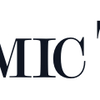Business News

The Economic Times: Breaking news, views, reviews, cricket from across India
Updated: 27 min 54 sec ago
Is US recession on cards? What we know
Categories: Business News
Why Trump did not meet Sunita Williams
Categories: Business News

